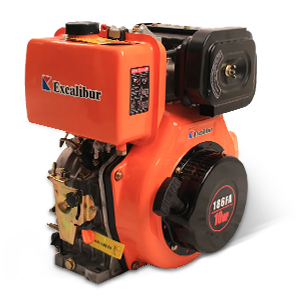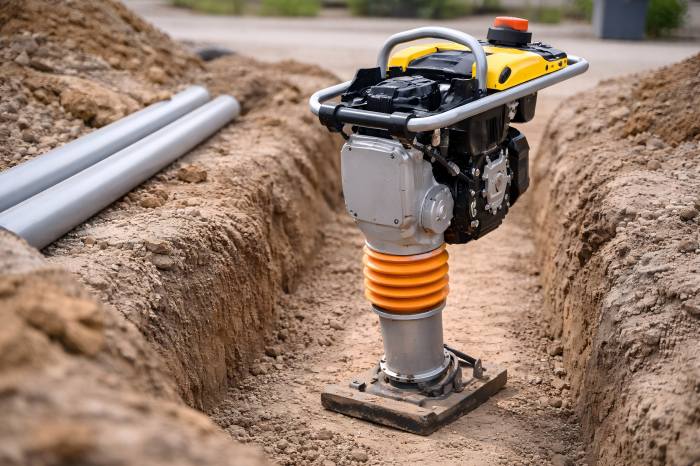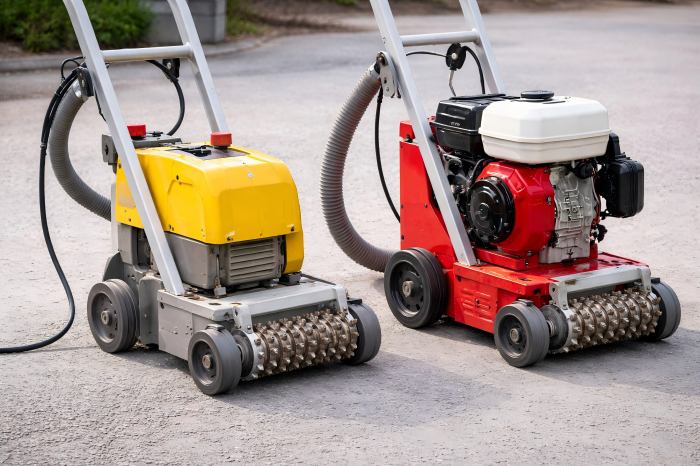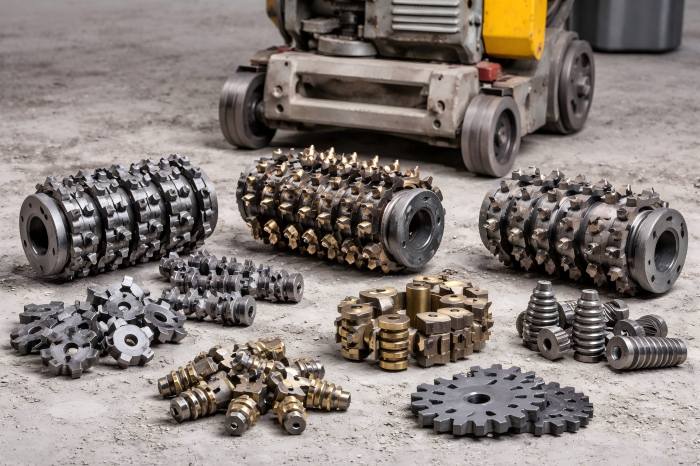In the civil engineering and construction sectors, tamping rammers are essential equipment. Known for their powerful percussive action and compact footprint, they are particularly useful in tight areas and around obstacles where larger compaction machines cannot reach. However, selecting the right tamping rammer for your job site isn’t just about brand or size—it heavily depends on the type of soil you’re compacting.
Different soil types react differently to vibration and impact. Under-compaction, over-compaction, machine wear, and even structural problems might result from using the incorrect kind of rammer. As a professional tamping rammer supplier, we understand the vital importance of matching the machine to the soil for optimal performance, safety, and durability.
Understanding Soil Basics for Compaction
Before choosing a tamping rammer, it’s important to understand the characteristics of the soil on your job site. Soil is typically classified into four major types:
- Cohesive Soils – These soils include a lot of clay. They stick together and retain moisture. Common examples include clay and silty clay.
- Granular Soils – Made up of sand and gravel, these soils have little to no cohesion and are held together primarily by friction.
- Mixed Soils – These are combinations of cohesive and granular materials.
- Organic Soils – Contain a high percentage of decomposing vegetation. These are generally unsuitable for structural compaction.
Each of these soil types requires a different approach to compaction and therefore benefits from specific tamping rammer designs.

Cohesive Soils: Clay and Silt
Soil Characteristics
- High moisture content
- High plasticity and cohesion
- Low permeability
- Prone to shrink-swell behavior
Challenges
Cohesive soils are difficult to compact due to their moisture-retaining nature. They tend to deform under pressure instead of densifying, which makes compaction slow and demanding.
Recommended Tamping Rammer Type
Heavy-Duty Tamping Rammers with High Impact Force
- Weight Range: 60–80 kg
- Impact Force: 10–15 kN
- Foot Size: Narrow foot (approx. 280–330 mm width)
Rammers with high percussion and narrow shoe plates are best suited to cohesive soils. The increased impact energy helps to break down the clay structure and force air out, creating a dense, compacted layer. Narrower feet increase ground pressure, making it easier to penetrate and vibrate through sticky clay.
Optional Features:
- High-frequency rammers (600–700 blows per minute)
- Diesel-powered rammers for maximum torque and stability
- Adjustable stroke heights for different clay densities
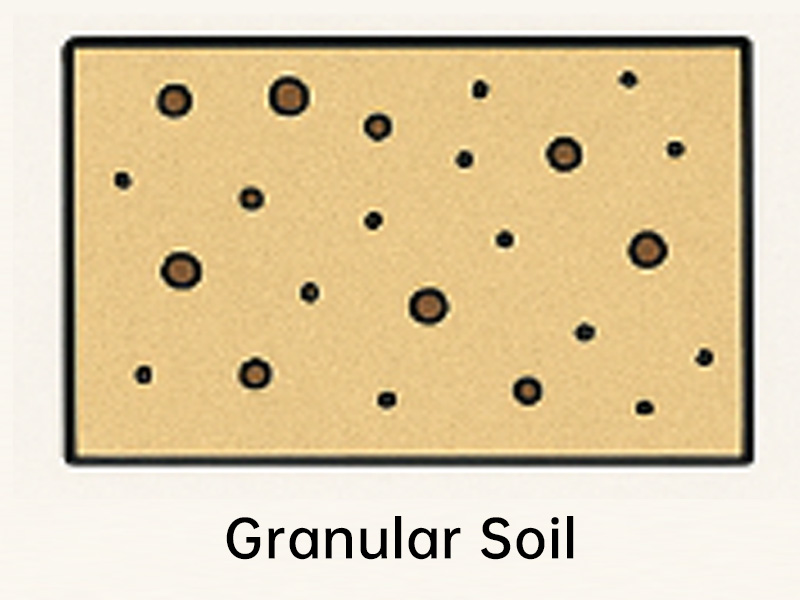
Granular Soils: Sand and Gravel
Soil Characteristics
- Free-draining
- Little to no cohesion
- Easily displaced
- Quick to compact with vibration
Challenges
Granular soils require vibration rather than impact for effective compaction. Rammers may over-compact and displace these materials if not matched properly, leading to uneven surfaces or loss of density.
Recommended Tamping Rammer Type
Lightweight to Mid-Range Rammers with Medium Frequency
- Weight Range: 50–70 kg
- Impact Force: 8–12 kN
- Foot Size: Medium foot (330–350 mm width)
Rammers with a slightly wider foot and moderate impact force help avoid punching through the material and provide sufficient vibration for compaction. In sandy soil, over-vibration can cause a “boiling” effect that loosens rather than tightens the particles.
Optional Features:
- Engine speed control for adjustable vibration
- Wider foot attachments to increase surface contact
- Anti-vibration handles for operator comfort

Mixed Soils: Clay + Sand, Silty Loam, etc.
Soil Characteristics
- Unpredictable mixture of cohesion and friction
- Varying moisture content
- Requires balanced compaction technique
Challenges
Mixed soils are highly variable, making compaction a trial-and-error process. Too much impact can over-compact cohesive components, while too little won’t bind granular materials.
Recommended Tamping Rammer Type
Versatile Rammers with Adjustable Settings
- Weight Range: 60–75 kg
- Impact Force: 9–14 kN
- Foot Size: Adjustable/interchangeable shoe
Choose a multi-purpose tamper that allows for stroke or speed adjustment. This enables the operator to respond to different material characteristics on-site, ensuring consistent compaction quality across zones.
Optional Features:
- Electronic stroke adjustment
- Removable foot for quick replacement
- Dual-fuel or 4-stroke engine for steady performance
Compacting Near Structures and Confined Spaces
Application-Specific Considerations
In trenching or around foundation walls, soil type remains important, but physical limitations of the workspace must also guide your choice.
Recommended Tamping Rammer Type
Compact, Low-Vibration Rammers
- Weight Range: 50–60 kg
- Foot Size: Narrow foot, long handle
- Design: Slim profile with offset handle
These rammers offer precise control and are built to work in narrow trenches without damaging surrounding structures. Choose models with low-emission engines and shock-reducing handle mounts to reduce operator fatigue.
Special Considerations by Job Type
Backfilling Trenches
Trenches typically involve cohesive backfill material. Use high-impact, narrow-foot rammers to penetrate deep into the trench and avoid voids.
Road Repairs and Asphalt Work
Granular base layers call for rammers with consistent frequency. In layered applications, start with a heavier rammer for the subgrade and a lighter one for the top layers.
Landscaping and Path Construction
Often involves mixed soil and sand. A mid-weight rammer with moderate impact force offers the flexibility needed for shaping and contouring.
Engine Types: 2-Stroke vs. 4-Stroke vs. Diesel
Choosing the right rammer also involves selecting the appropriate engine based on soil type, environment, and fuel availability.
| Engine Type | Best For | Advantages | Disadvantages |
| 2-Stroke Gasoline | Light granular soil | Lightweight, simple | Noisy, high emissions |
| 4-Stroke Gasoline | Mixed soils | Quieter, fuel-efficient | Heavier, costlier maintenance |
| Diesel | Cohesive soil, clay | Powerful torque, durable | Heavy, costly, higher initial price |
For most job sites, 4-stroke engines strike the best balance between performance and ease of use.
Safety and Ergonomics in Soil-Specific Applications
Working with difficult soil conditions for extended periods demands operator-focused features, especially in hot, humid, or cold environments.
Look for:
- Low hand-arm vibration (HAV) levels
- Engine noise insulation
- Stable center of gravity for uneven terrain
- Maintenance-free air filters and shock mounts
Rammers with anti-vibration systems and lightweight composite handles reduce fatigue and increase daily productivity—an important factor when working with heavy clay or wet conditions.
Routine Maintenance for Soil-Specific Wear and Tear
Different soils cause different types of wear:
- Clay clogs air filters and creates suction
- Sand causes abrasion of the foot and piston seals
- Loam soils trap moisture, promoting rust
To prolong rammer life:
- Use foot guards and rubber bellows
- Regularly inspect and clean filters and bellows
- Choose units with sealed gearboxes and reinforced bell housings
Choosing the right tamping rammer for your job site is not just a matter of horsepower or price—it’s about matching the machine to the soil type and specific job requirements. Cohesive soils demand high-impact, narrow-foot machines; granular soils need moderate frequency and wider contact surfaces; mixed soils require adjustable, multi-purpose tools.
As a manufacturer, we offer a full range of tamping rammers optimized for every soil condition and job requirement—from narrow trench models to high-impact clay compactors. Understanding your soil profile and selecting the proper machine will not only improve compaction quality but also extend the life of your equipment and reduce operational costs.
Need help choosing the right rammer? Contact our experts today and get personalized recommendations based on your soil type and project requirements.

